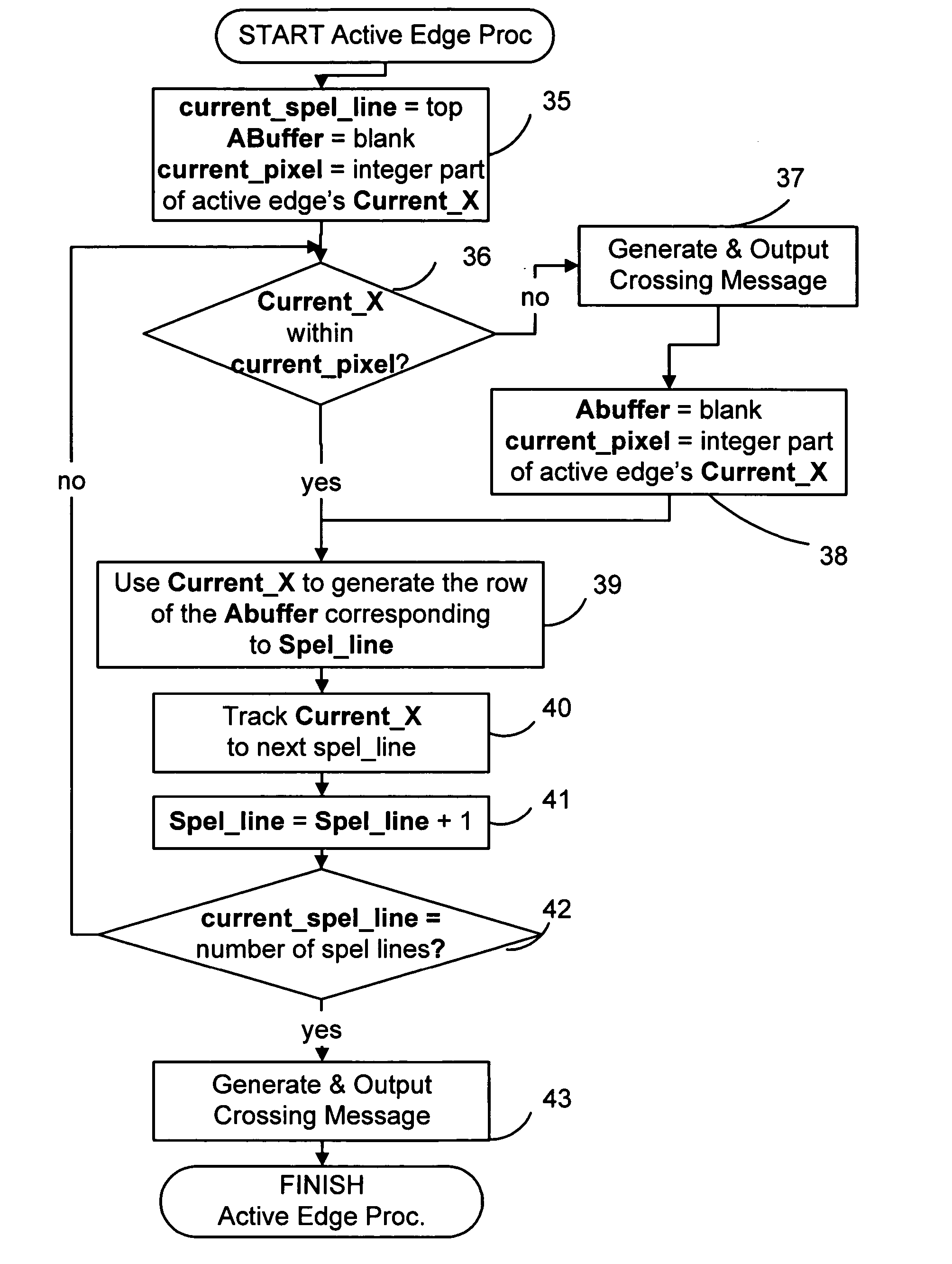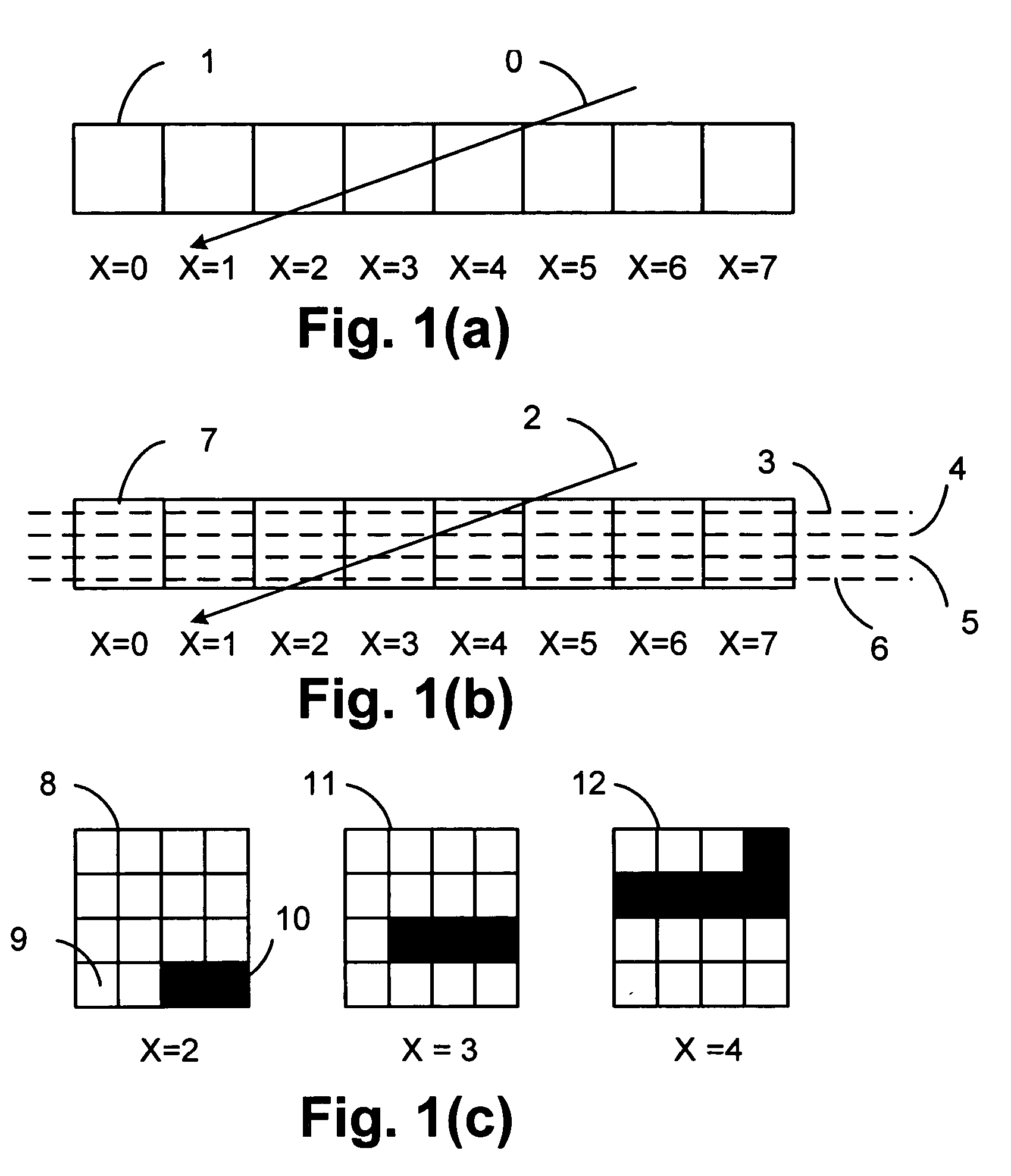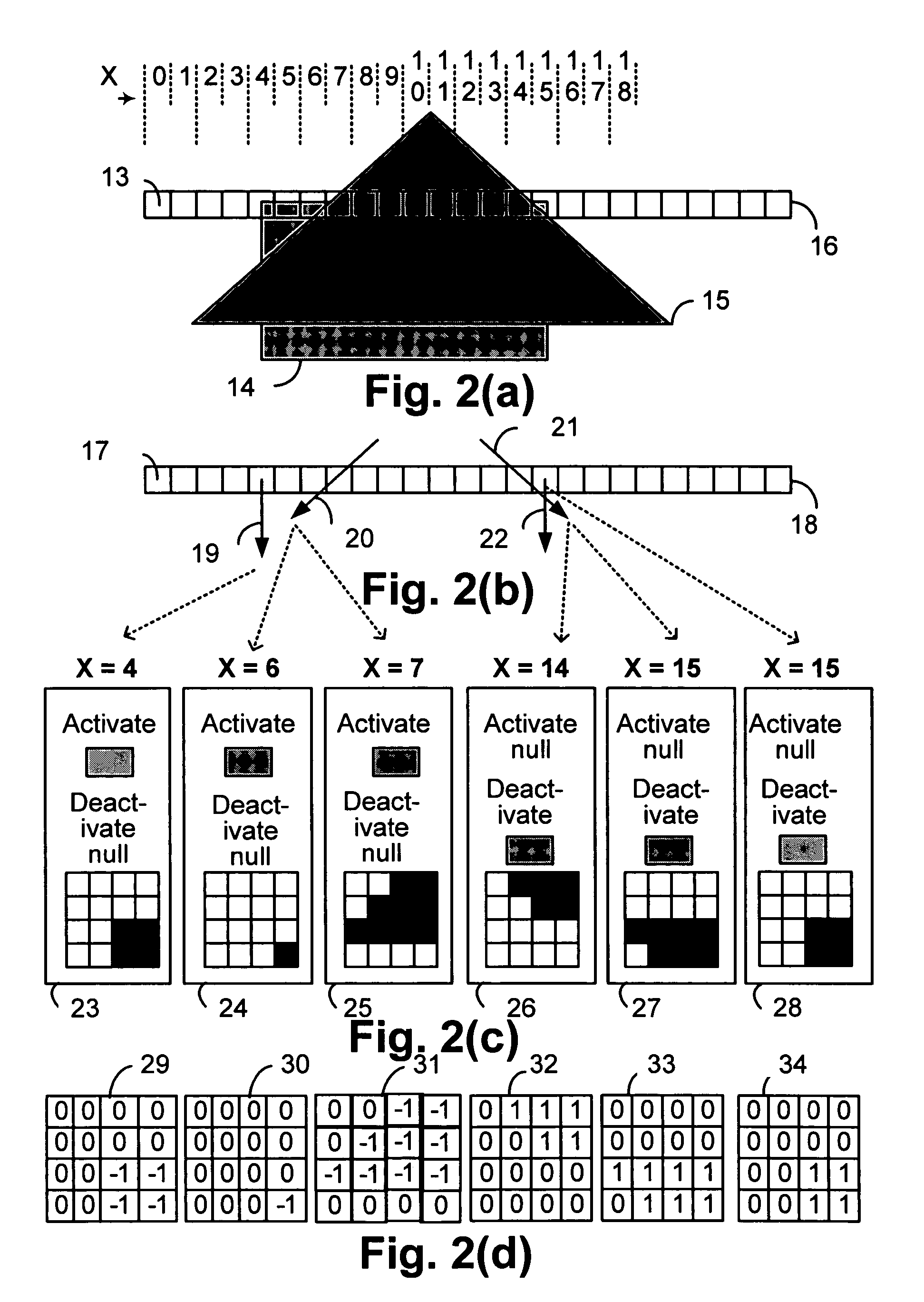Antialiasing compositing in graphic object rendering
a technology of antialiasing and compositing, applied in the field of compositing of graphic objects, can solve the problems of low quality image, quantisation noise, and simple implementation and computational efficiency, and achieve the effect of improving computational efficiency and reducing complexity
- Summary
- Abstract
- Description
- Claims
- Application Information
AI Technical Summary
Benefits of technology
Problems solved by technology
Method used
Image
Examples
Embodiment Construction
Table of Contents
1. Introduction
1.1. Coordinate spaces 1.2. Graphic objects 1.3. Glyphs 1.4. Z-levels 1.5. Stroking 1.6. Morphing
2. The Driver Module 2.1. Sprites 2.1.1. Sprites: transformation matrices 2.1.2. Graphic objects and their depth 2.2. The display list 2.2.1. Frame rendering 2.2.2. Graphic objects and z-levels 2.2.3. Local depths and absolute depths
3. Transformation, Morphing and Stroking 3.1. Morphing 3.2. Transformation 3.3. Generating Edges 3.4. Decomposition of strokes into edges and z-levels 3.4.1. Stroking a straight edge 3.4.2. Stroking a curved edge 3.4.3. Stroking a join 3.4.4. Stroking Equal or Opposite Edge Joins 3.4.5. Generating end-caps at the end of a path 3.4.6. Endcaps between stroked and unstroked edges 3.4.7. Z-level assignments for opaque strokes 3.4.8. Z-level assignments for transparent strokes 3.4.9. Transformation of Stroking Primitives 3.5. Filtering 3.6. Generating edge-tracking parameters 3.6.1. Generating st...
PUM
 Login to View More
Login to View More Abstract
Description
Claims
Application Information
 Login to View More
Login to View More - R&D
- Intellectual Property
- Life Sciences
- Materials
- Tech Scout
- Unparalleled Data Quality
- Higher Quality Content
- 60% Fewer Hallucinations
Browse by: Latest US Patents, China's latest patents, Technical Efficacy Thesaurus, Application Domain, Technology Topic, Popular Technical Reports.
© 2025 PatSnap. All rights reserved.Legal|Privacy policy|Modern Slavery Act Transparency Statement|Sitemap|About US| Contact US: help@patsnap.com



